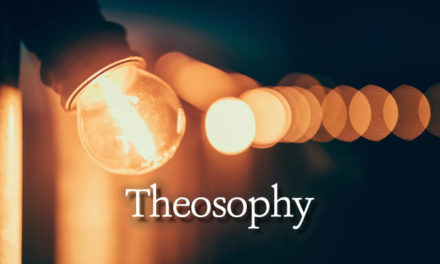In 2 Peter 2:1–2, the apostle states, “But there were false prophets also among the people, even as there shall be false teachers among you, who privily shall bring in damnable heresies, even denying the Lord that bought them, and bring upon themselves swift destruction. And many shall follow their pernicious ways; by reason of whom the way of truth shall be evil spoken of.”
The apostle accurately observed the spread of heresy in the first–century church, and his warning that false teachers would continue to arise can easily be seen in the growth of cults and pseudo–Christian religions in our time. Interestingly, the heresies that are popular today are simply variations of the same heresies that have arisen throughout the history of the Church. This article will briefly examine some of the most influential of these heresies, will list scriptures that refute the heresy, and will list some of the modern groups that continue to promote the heresies.
Judaizers — 1st Century Judaizers, or the Judaizing movements, is not a condemnation of Judaism or ethnic Jews. Instead, it has historically been the label for those who attempt to make observing the Mosaic Law a requirement for Christianity and salvation. The book of Acts refers to such people as “they of the circumcision” (Acts 10:45; 11:2), and the council at Jerusalem decisively ruled against them (Acts 15:23–29).
Despite this biblical ruling, Judaizing movements continue to grow in our time. These movements require such things as strict observance of the Sabbath on Saturday, mandatory tithing, observance of the Jewish feasts, and other regulations in order for a Christian to earn salvation.
Scriptural Refutation: Romans 3:24–28.
Modern Groups: Seventh-Day Adventists; followers of Herbert W. Armstrong.
Gnosticism — 1st and 2nd Centuries The Gnostics promoted three basic teachings: 1) matter is evil, and thus Jesus only appeared to be a man; 2) because the Bible teaches that God created matter, the God of the Old Testament Jews is an evil deity who is distinct from the New Testament God, Jesus Christ; and 3) ultimate Truth is a mystery that is available only to those who are initiated into the secret teachings and practices of the Gnostic groups.
Gnosticism has become popular in the latter half of the 20th century with the 1945 Egyptian discovery of the Nag Hammadi library, a collection of Gnostic writings. One of the most influential books in modern Gnosticism has been Elaine Pagel’s The Gnostic Gospels, an analysis of the Nag Hammadi documents. Modern Gnosticism is commonly found in syncretistic groups, which teach that Truth can be found by combining the beliefs and practices of numerous religions.
Scriptural Refutation: Genesis 1:4, 10, 18, 21, 25, 27; John 10:30; 2 Timothy 3:16–17; 1 John 1:1.
Modern Groups: Primarily found in the New Age Movement.
Docetism — 1st – 4th Centuries The name is taken from the Greek word dokein = to seem. The docetics believed that the seeming humanity of Christ, particularly his suffering, were imaginary. They taught that the divine God cannot suffer, and thus, since Christ is divine, his suffering was an illusion to teach humans a valuable lesson about the illusion of matter. Docetism was an integral part of Gnosticism. The heresy was a major impetus for the Chalcedonian Definition of 451, which describes that Christ is one person with two natures: human and divine.
The heresy continues among modern groups that deny the reality of suffering.
Scriptural Refutation: John 1:1–3, 14; Philippians 2:6–8.
Modern Groups: Christian Science, Mind Sciences, the New Age Movement.
Origenism — 3rd Century The career of Origen is one of the more unusual in Christian history. He dedicated himself to defending attacks on Christianity from paganism, Judaism, and Christian heresies. His apologetic book, Against Celsus, remains a classic piece of Christian literature.
Despite his defense of orthodoxy, Origen developed several heretical doctrines that were eventually condemned in 553. His most notable deviant teachings involve the preexistence of human souls, the subordination of the Son to the Father, and universalism. Few groups currently adopt all of Origen’s teachings. Nonetheless, groups influenced by Joseph Smith believe in both the preexistence of souls and the essential subordination of the Son to the Father, and many other groups believe in both the preexistence of souls (usually in the form of reincarnation) and universalism.
Scriptural Refutation: Hebrews 9:27; John 10:30; Matthew 7:13–23; 8:11–12.
Modern Groups: Mormons, Liberal Christianity.
Dynamic Monarchianism / Sabellianism — 3rd Century Although the heresy was first taught in 190 by Theodotus of Byzantium, monarchianism was most notably promoted by Sabellius in the third century. Monarchianism denies the Trinity by teaching that the Father, Son, and Holy Spirit are not separate persons. Instead, the monotheistic God (called a monad) progressively revealed Himself as the creator and lawgiver through the “office” of Father, as the redeemer through the office of Son, and as the source of grace through the office of Spirit.
Scriptural Refutation: John 3:16; 17:22–23; 1 John 5:7–14.
Modern Groups: Oneness Pentecostals.
Arianism — 4th Century Perhaps the most significant heresy faced by the Church, Arianism (named after Arius) taught that, as the Son of God, Christ was created by God the Father. Arius thus denied the Trinity by teaching that Jesus is less than fully divine. This heresy became extremely widespread, even being promoted by many bishops. It was condemned at the First Council of Nicaea in 325 (which proclaimed that Christ is fully divine), and at the First Council of Constantinople in 381 (which proclaimed that the Holy Spirit is divine). Arianism remains one of the most common heresies to afflict the Church. Almost all pseudo–Christian groups deny the full deity of Christ.
Scriptural Refutation: John 10:30; 1 John 5:7.
Modern Groups: Jehovah’s Witnesses, Mormons, the Unification Church.
Pelagianism — 5th Century Pelagius, a Welsh monk, taught that humanity does not inherit original sin, and that salvation is earned by following the example of Christ. Grace is not necessary; instead, humans overcome the sin they gradually develop by using God’s grace to assist them in perfecting themselves and thus earning salvation.
This heresy, along with Arianism, is endemic to almost all modern pseudo–Christian groups.
Scriptural Refutation: Romans 3:24–26; 5:11–21.
Modern Groups: Jehovah’s Witnesses, Mormons, followers of Herbert W. Armstrong.
Nestorianism and Mono-physitism — 5th Century Nestorius, bishop of Constantinople, taught that Mary bore only Jesus’ human nature in her womb, thus implicitly teaching that Christ was not divine while on earth. In an overreaction to Nestorius, the Monophysites taught that Christ was one person with his humanity and divinity fused into a single nature (the Greek roots of the word monophysite are mono = one, and physis = nature), thus implicitly teaching that Christ was neither fully human nor fully divine.
Nestorianism is implicit in those groups who deny the reality of matter. One of the most common forms of the monophysite heresy can be found in the New Age Movement, where many believe that Jesus was a man who developed his “Christ consciousness” and thus fully achieved his divinity.
Scriptural Refutation: Colossians 2:9; Philippians 2:6–8.
Modern Groups: the New Age Movement, Christian Science.
Conclusion
Heresy is not new to the Church. The book of Colossians is Paul’s response to the syncretistic heresies present in the 1st century church in Colossae. Colossians 1:15–20, known as the “Christ Hymn,” is one of the best responses to the heresies that attack the deity and work of Christ.
Christians are commanded by God to “earnestly contend for the faith which was once delivered unto the saints” (Jude 3). One of the most effective ways to contend for the faith is to know the various ways in which the faith is attacked, and to know the biblical response to these attacks.
By Jason Barker






